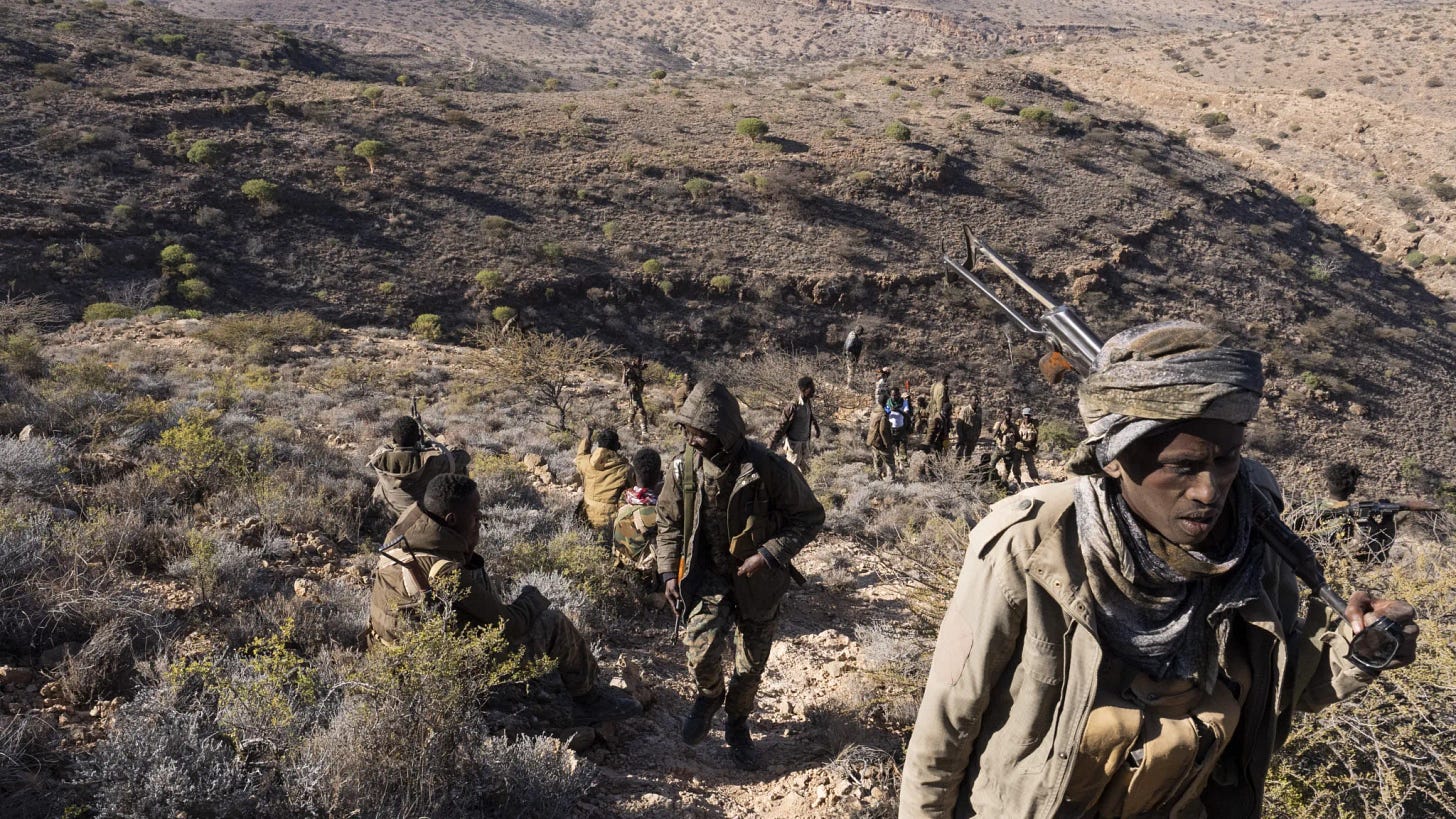Why Capturing Islamic State Somalia’s Finance Chief Won’t Stop the Money
Tactical victories don’t dismantle transnational financial systems.
PDF Soldiers hunt for IS-S operatives in the Cal Miskaad mountains in January 2025. Image source
On July 25, U.S. Special Operations Forces captured Islamic State–Somalia (IS-S) leader Abdiweli Muhammad Yusuf in a targeted raid near Dhaardaar, Puntland. U.S. Africa Command (AFRICOM) and the Puntland Defense Forces (PDF) describe Yusuf as a senior financial facilitator in IS-S’s regional network—labeled in several outlets as the group’s “finance chief.” He reportedly served as Emir of Maktab al-Karrar (al-Karrar Office), which oversees Islamic State financial operations across eastern and southern Africa.
The operation to capture Yusuf, conducted near Dhaardaar in Puntland, follows a broader uptick in U.S. intelligence-led strikes against jihadist factions in East Africa. Although global security is no doubt improved by Yusuf’s new life in U.S. custody, the networks he oversaw have likely already begun to adapt to his absence. Targeting them will require a similar adaptation in counter threat finance moving forward.
A regional hydra
It’s not that Yusuf was unimportant—I flagged him in an article back in February. But what that piece made clear was this: the system he supposedly presided over is far more resilient than any one individual.
Al-Karrar is the largest fundraising node in IS’s global operation. It manages a sophisticated patchwork of hawaladars (informal money transfer agents), crypto brokers, and administrators spanning much of eastern and southern Africa. Its fundraising includes ransom kidnappings and pig-butchering scams in South Africa. It also maintains close ties to groups like Mozambique’s al-Shabab (not to be confused with the Somali group), which allegedly generates over $20 million annually through illicit timber and resource smuggling.
According to several reports, Al-Karrar is also the main financial backer of Islamic State Khorasan Province (ISKP)—the IS branch behind deadly attacks in Iran and Russia and multiple foiled plots in Europe. Funds appear to move through informal remittance corridors from Somalia to Central Asia, often mediated by crypto brokers and hawala facilitators.
In short, it’s fairly large operation comprised of a broad patchwork of transregional operators.
The architecture that sustains terror
Just like in a major corporation or bank, senior terrorist financial operators—even those at the top—are ultimately replaceable. Finance is a trade: complex, but not rarefied. Puntland may not attract Wall Street-level talent, but it has nonetheless produced a resilient and international cohort of operators skilled in transnational illicit finance.
The architecture that sustains these networks—informal corridors, crypto rails, hawaladars, local extortion, and commodity-based laundering—remains largely intact. These are not fragile hierarchies. They are decentralized ecosystems designed to survive leadership decapitation.
Kinetic operations may produce short-term friction, but they do not dismantle decentralized financial ecosystems. The true point of leverage lies in targeting the liquidity infrastructure itself: the stablecoin brokers, hawala corridors, illicit exchanges, and jurisdictional blind spots that allow terrorist networks to persist, adapt, and regenerate.
The bottom line
Degrading terrorist finance requires more than leadership targeting—it demands structural engagement. That means addressing the financial ecosystems that outlast individuals. From stablecoin rails to commodity laundering and informal remittance routes, these systems must become the focus of counter–threat finance strategy. Tactical successes only translate into durable gains when we challenge the infrastructures that sustain insurgency and transnational violence.
More to come. Stay tuned.



